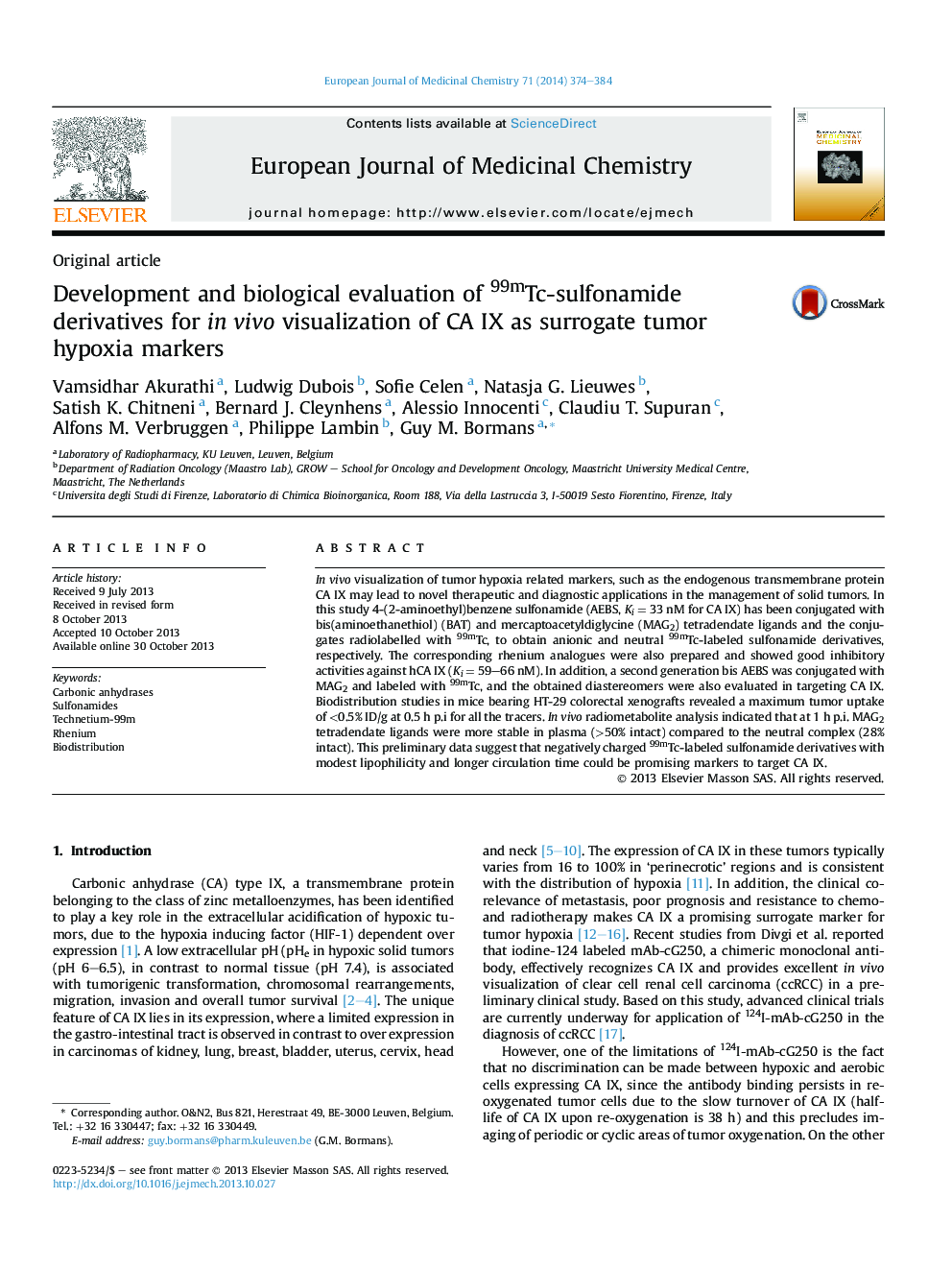| Article ID | Journal | Published Year | Pages | File Type |
|---|---|---|---|---|
| 1392606 | European Journal of Medicinal Chemistry | 2014 | 11 Pages |
•The sulfonamide derivative AEBS was conjugated with a BAT and MAG2 ligand.•The new sulfonamide conjugates were successfully radiolabelled with 99mTc.•The corresponding rhenium analogs showed a good inhibitory constant against CA IX.•Biodistribution in mice bearing HT-29 tumor xenografts was studied.•All new tracers showed a limited retention in tumors (≤0.5% ID at 0.5–4 h p.i).
In vivo visualization of tumor hypoxia related markers, such as the endogenous transmembrane protein CA IX may lead to novel therapeutic and diagnostic applications in the management of solid tumors. In this study 4-(2-aminoethyl)benzene sulfonamide (AEBS, Ki = 33 nM for CA IX) has been conjugated with bis(aminoethanethiol) (BAT) and mercaptoacetyldiglycine (MAG2) tetradendate ligands and the conjugates radiolabelled with 99mTc, to obtain anionic and neutral 99mTc-labeled sulfonamide derivatives, respectively. The corresponding rhenium analogues were also prepared and showed good inhibitory activities against hCA IX (Ki = 59–66 nM). In addition, a second generation bis AEBS was conjugated with MAG2 and labeled with 99mTc, and the obtained diastereomers were also evaluated in targeting CA IX. Biodistribution studies in mice bearing HT-29 colorectal xenografts revealed a maximum tumor uptake of <0.5% ID/g at 0.5 h p.i for all the tracers. In vivo radiometabolite analysis indicated that at 1 h p.i. MAG2 tetradendate ligands were more stable in plasma (>50% intact) compared to the neutral complex (28% intact). This preliminary data suggest that negatively charged 99mTc-labeled sulfonamide derivatives with modest lipophilicity and longer circulation time could be promising markers to target CA IX.
Graphical abstractFigure optionsDownload full-size imageDownload as PowerPoint slide
